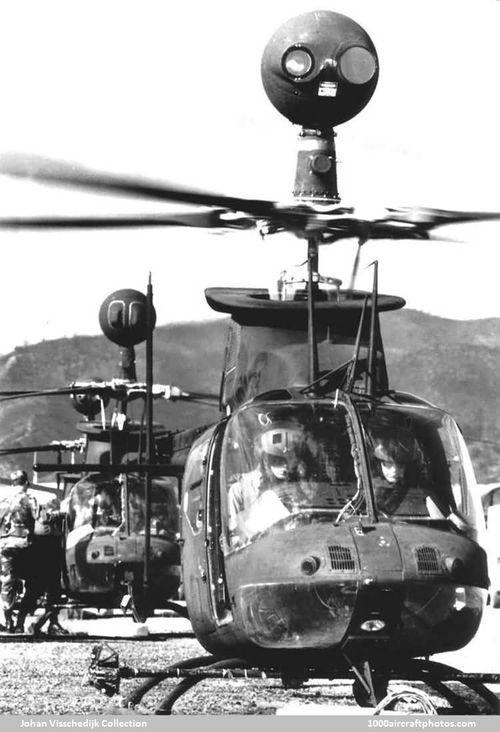Successful development of this aircraft did lead to modification of at least 368 of existing OH-58A Kiowa helicopters under the US Army designation OH-58D. Their purpose was to provide the Army with a force of close combat aerial reconnaissance helicopters capable of intelligence gathering and surveillance as well as supporting attack helicopter missions and directing artillery fire.
Bell was awarded a $151 million development contract, and the Model 406 completed successfully the US Army's critical design review in November 1982. The first of five prototypes made its first flight on 6 October 1983, and was used for manual validation and training. The second and fifth AHIP prototypes were employed in air vehicle testing at Bell's Flight Research Center in Arlington, Texas.
AHIP No 3, equipped with the full-up mast mounted sight (MMS), went to Yuma, Arizona, for mission equipment package (MEP) evaluation. The fourth prototype was the avionics and electro-magnetic compatibility (EMC) test vehicle. The qualification program was completed in June 1984; US Army development and operational test programs at Yuma and at Edwards AFB, California, and were completed in February 1985.
The mast mounted sight houses a 12x magnification TV camera, an auto-focusing infra-red thermal imaging sensor and a laser rangefinder/designator, with automatic target tracking and in-flight automatic bore sighting. Armament mounted on outriggers on cabin sides consists of four Stinger air-to-air or Hellfire air-to-surface missiles, or two pods with seven 2.75 in (70 mm) rockets, or one 0.50 in (12.7 mm) machine gun (port side only)."
View also photo 5950 and read the History Brief
